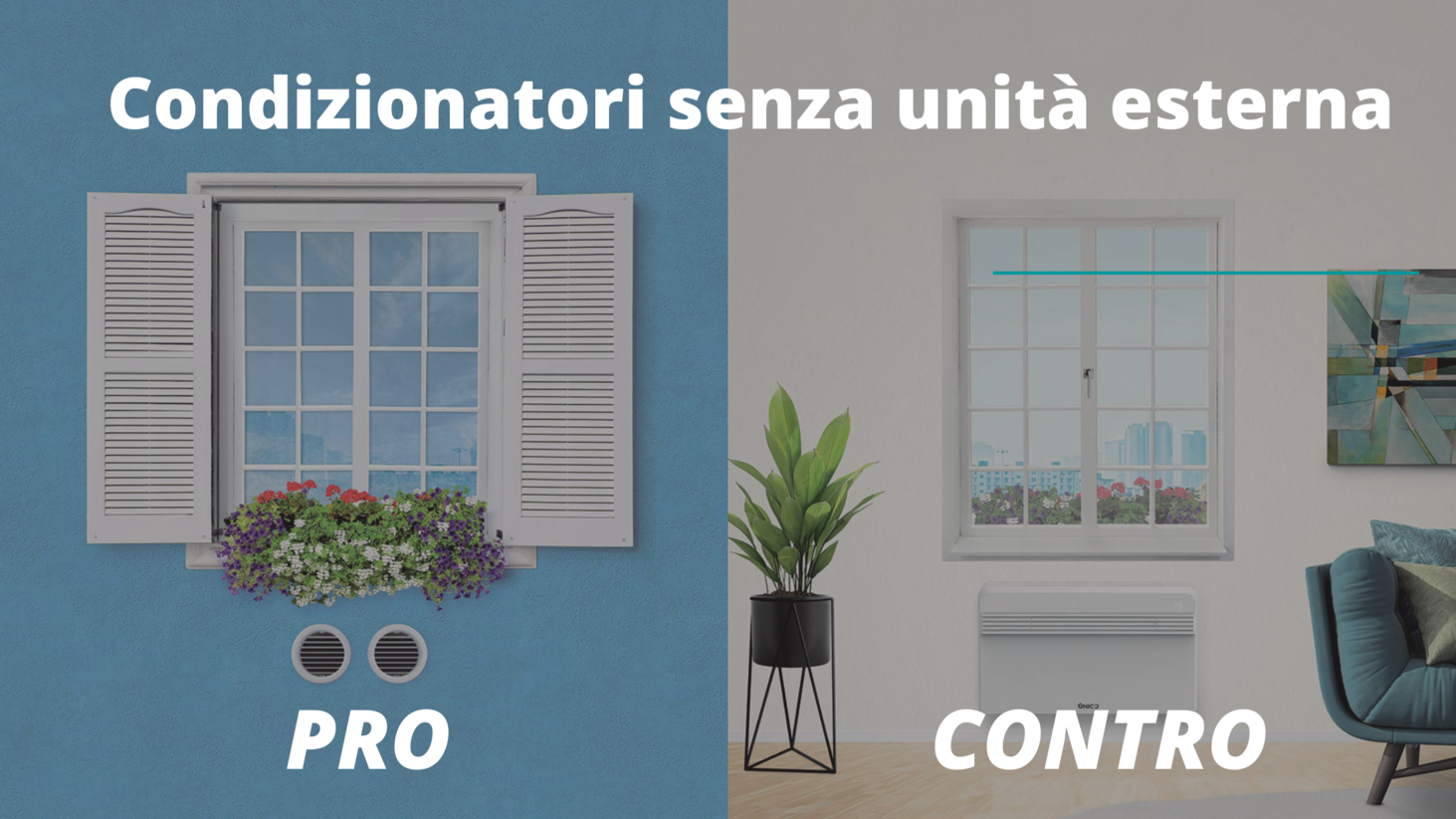Air conditioners without an external motor: how they work, what are the characteristics, the pros and cons. Find out more on the Climamarket blog.
Pros and cons of air conditioners without an external motor
"No pleasure, no sin, no ecstasy is more intense than air conditioning". The famous phrase from the film Dogma, directed by a controversial Kevin Smith in 1999, manages to perfectly describe the refreshment that an air conditioner can give us during the hottest months of the year.
The air conditioner is indispensable both at home and in the workplace, and has different characteristics to adapt to the most varied needs of consumers.
Air conditioners without an external unit, for example, are the most suitable for those who are looking for immediate freshness but have space problems. It is no coincidence that these are the most accessible air conditioners on the market. Let's find out together how they work, their peculiarities, and of course all the advantages and disadvantages that their installation entails.
Air conditioners without outdoor unit: how they work
Usually, when we think about installing an air conditioner, we take for granted the presence of two main elements.
The first is the so-called internal split, that is to say the air conditioner that we install at home, in the office or in a shop, and which introduces cold - and hot, in some cases - air into the environment. To make it even simpler, it is the device that we control with the remote control. The second is the outdoor unit, consisting of a fan and a cooling and heating system that is usually fixed on the external facade of the building. An element in itself rather bulky, and whose tonnage can be "circumvented" by opting for the purchase of air conditioners without an external motor, without an external unit.
Their installation is much less common than that of traditional air conditioners, but in some cases it is the only possible solution. We think of certain urban and architectural constraints, perhaps for buildings located in historic centers or in areas of high historical and artistic value, or the presence of condominium rules that in fact prevent the installation of an external unit on the facade of the structure.
Air conditioners without outdoor unit therefore guarantee considerable savings in terms of occupied space and important architectural protection of the building, together with the absence of air emissions on public land. These appliances, which are entirely inside the building, have the motor integrated in the split located in the house. In this case, the operation is very similar to that of air conditioners that have an external compressor, but the same is an integral part of the entire machine. Two holes are then applied to the wall to which it will be fixed, connecting the air conditioner with the outside, so as to allow the air to enter and exit, and the regularity of the heat exchange. The machine takes hot air from the outside, processes it with refrigerant gas and finally releases it into the environment. All with generally lower costs, both for fixed and mobile models - more suitable for cooling smaller areas and for a short time.
Air conditioners without external motor: advantages and disadvantages
Since this is such a particular solution, choosing air conditioners without an external unit naturally has specific pros and cons.
many types of existing designs - it integrates almost perfectly in any environment;
it allows you to avoid running into the architectural and legal limits imposed on certain buildings - as happens, for example, in buildings bound by a historical point of view;
it simplifies maintenance work, since it is not necessary to carry out potentially dangerous actions to reach it.
The downside, for air conditioners without an external motor, is that the energy efficiency will be lower: it should not be surprising that the external motor allows machines with a much higher power to be available. In addition, this type of air conditioners must be positioned directly on a wall that faces outwards - avoiding duct work -, and are generally more voluminous, considering that they include all the elements provided in the system.
If the absence of the engine on the outside avoids disturbing the neighbors, in the same way the noise is present inside and is even higher than that of traditional splits, although the most recent models have greatly reduced noise emissions.

